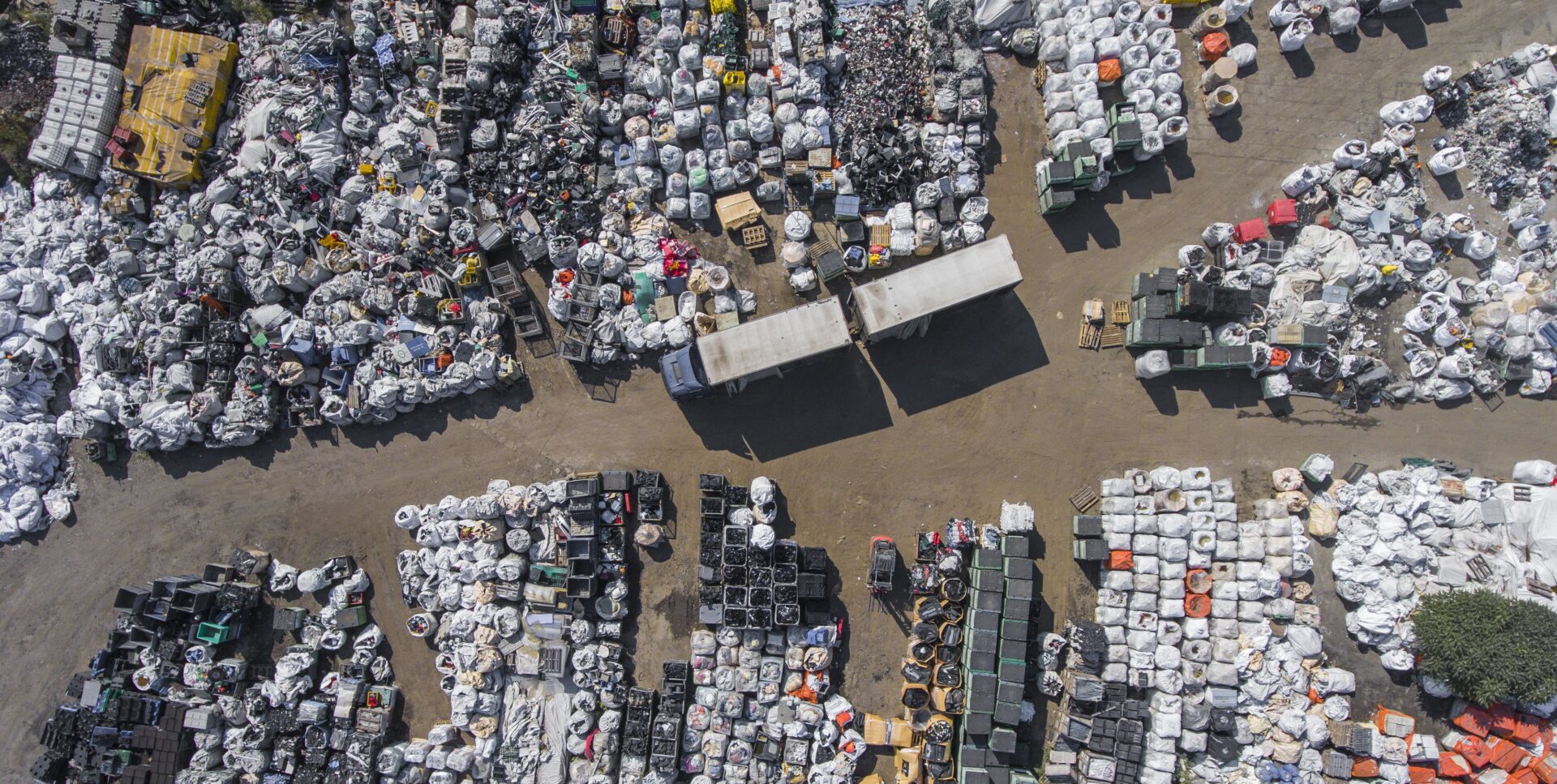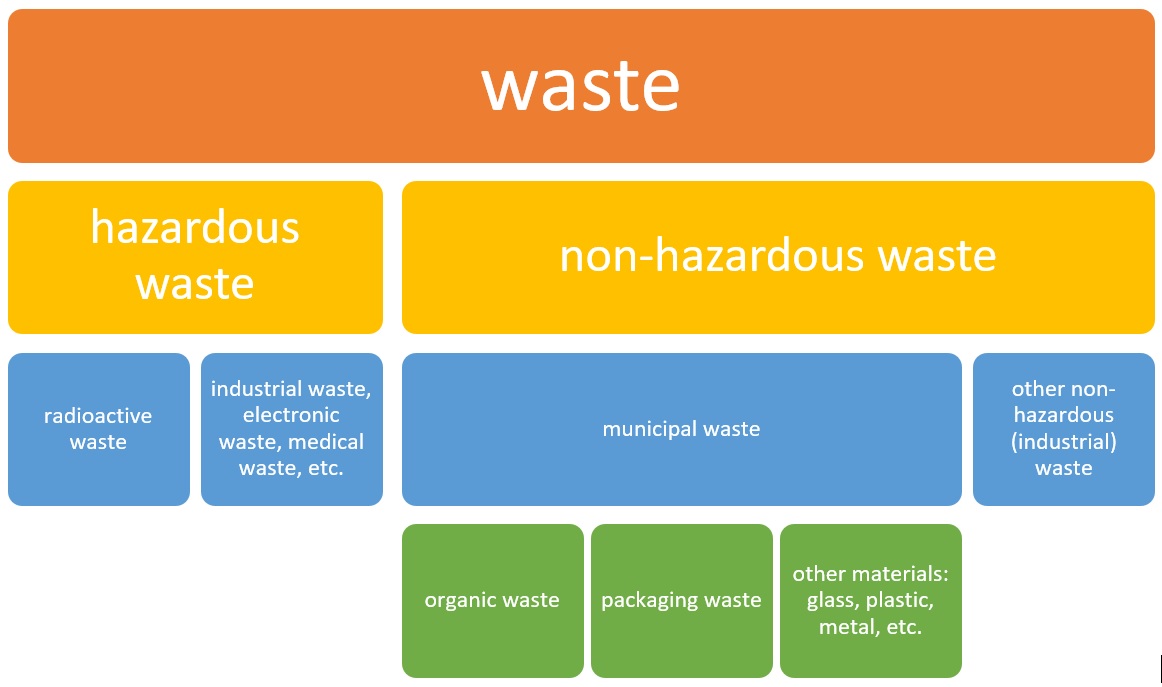
MOOC: Auditing waste management
1.1. Definition and classification of waste
Waste is a product or substance which is no longer suited for its intended use. Whereas in natural ecosystems waste (i.e. oxygen, carbon dioxide and dead organic matter) is used as food or a reactant, waste materials resulting from human activities are often highly resilient and take a long time to decompose.
For legislators and governments, defining and classifying waste based on risks related to the environment and human health are therefore important in order to provide appropriate and effective waste management. For the producer or holder, assessing whether a material is waste or not is important in identifying whether waste rules should be followed. Definitions are also relevant in the collection and analysis of waste data as well as in domestic and international reporting obligations.
Waste has been defined in most countries and is generally tied to the concept of disposal.
| Article 5 of the Basel Convention []: “ ‘Wastes’ are substances or objects which are disposed of or are intended to be disposed of or are required to be disposed of by the provisions of national law”. OECD []: Wastes are substances or objects, other than radioactive materials covered by other international agreements, which: i) are disposed of or are being recovered; or ii) are intended to be disposed of or recovered; or iii) are required, by the provisions of national law, to be disposed of or recovered. Waste Framework Directive [] of the European Union, Article 3: “‘Waste’ means any substance or object which the holder discards or intends or is required to discard.” |
On the more detailed level, a notable variety of definitions and classification approaches are used globally. Materials and substances that are directed for recycling or re-use are often (but not always) regarded as waste since the producer or holder discards them and they will only cease to be waste if certain procedures are completed and documented. Defining waste can at times also be a case-by-case decision. For example, industrial by-products can on certain conditions be regarded as non-waste. The national waste regulation is the main reference point in this regard.
Waste can be classified based on source (who/what generated the waste? See Figure 1), substance (what is it made of?), hazard properties (how dangerous is it?), management (who handles it?) or a mix of these concepts.

Figure 1. Waste classification by origin. Different activities generate different types of waste.
Source: National Audit Office of Estonia
Two main waste categories can be established based on the distinct legislation and policy instruments usually in place: non-hazardous or solid waste; and hazardous waste. Such a classification is also used in the Basel Convention. Hazardous waste is usually regulated at the national level, while non-hazardous is regulated at the regional or local (municipal) level. (See Figure 2.)
Figure 2. Classification of waste
Source: National Audit Office of Estonia
Non-hazardous/solid waste is all waste which has not been classified as hazardous: paper, plastics, glass, metal and beverage cans, organic waste etc. While not hazardous, solid waste can have serious environmental and health impact if left uncollected and untreated (explained further in chapter 1.3.). While a significant proportion of solid waste could theoretically be reused or recycled, collection by type of waste (selective waste collection) – a prerequisite for reuse and recycling – is one of the biggest waste management challenges.
Hazardous waste is waste that has been identified as potentially causing harm to the environment and human health and therefore needs special, separate treatment and handling (refer also to chapter 1.3.). Chemical and physical characteristics determine the exact collection and recycling process. Flammability, corrosiveness, toxicity, ecotoxicity and explosiveness are the main characteristics of hazardous waste. Liquid, gaseous and powder waste need special treatment by default to avoid the dispersal of the waste. Generally, separate collection and handling are established to avoid contact with non-hazardous waste. Chemical treatment, incineration or high-temperature treatment, safe storage, recovery and recycling are possible modes of treatment for hazardous waste. Most hazardous waste originates from industrial production. Special kinds of hazardous waste include:
- E-waste is waste from electric and electronic equipment such as end-of-life computers, phones and home appliances. E-waste is generally classified as hazardous because it contains toxic components (e.g. PCB and various metals).
- Medical waste originates from the human and animal healthcare systems and usually consists of medicines, chemicals, pharmaceuticals, bandages, used medical equipment, bodily fluids and body parts. Medical waste can be infectious, toxic or radioactive or contain bacteria and harmful microorganisms (including those that are drug-resistant).
- Radioactive waste contains radioactive materials. The management of radioactive waste differs significantly from that of other waste. Auditing the management of radioactive waste is not the subject of this MOOC.
 AUDIT CASE: MEDICAL WASTE MANAGEMENT
AUDIT CASE: MEDICAL WASTE MANAGEMENT
| Paraguay – Medical waste managementAs part of a combined audit of the Social Service Institute, the Office of the Comptroller General of Paraguay audited the activities related to the integral management of medical waste in 2018. Among other things, the audit revealed shortcomings in the environmental licencing process for medical facilities and conditions for the temporary storage of medical waste as well as identified a lack of specific equipment for internal transport of different categories of medical waste in some facilities. One of the challenges faced in the audit was that the health of auditors was potentially at risk upon them visiting sites not compliant with the requirements of managing medical waste. This audit case is a good example of why hazardous waste including medical waste needs special separate treatment and handling. |
 THINKING EXERCISE
THINKING EXERCISE
- How are waste issues regulated in your country? Is there special waste act? Was it easy it to find the waste act or other relevant materials?



